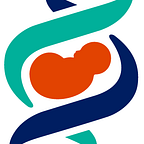The Unacceptable Truth of Maternal Mortality and What We Can Do to Change It through Research
Birth Defects Insights, a Teratology Society Blog
By Suzan Carmichael, PhD, MS, Teratology Society Member
Maternal mortality refers to maternal deaths that are related to pregnancy and occur during pregnancy or soon after giving birth. Did you know that in the U.S., our rate of maternal mortality is higher than any other high-income country? This is not acceptable. This already embarrassingly high rate is on the rise — maternal deaths are actually increasing in the U.S. Severe maternal morbidities — conditions that put women most at risk of death, but are 50–100 times more common than death — are also increasing. Unacceptable. In addition, maternal death is 3–4 times more common among black women than white women. Again, unacceptable.
Be Part of the Solution
For many years, I have conducted research about the impact of maternal health on the developing fetus — much of it has been about birth defects. As these disturbing trends in maternal health have emerged, I’ve become more interested in understanding why they have occurred and how we can reverse them. It’s especially interesting to me that more than half of all maternal deaths and severe maternal morbidity could probably be prevented through better care — so, a potential solution does exist! Last year, Linda Roberts, PhD, chair of the Teratology Society Communications Coordination Committee, and Mary Alice Smith, PhD, a Teratology Society Past President, felt this topic was important to include in the annual meeting, contacted me to find out if I knew anyone working on maternal mortality in California, given that they had heard about its unique trends. Did you know California is the only state where maternal mortality has actually declined in recent years? There is something vital to learn from the Golden State. Anyway, I told them that I was actually very interested in this topic myself, and that I was beginning to focus my own research in this area.
That’s how I became a partner in developing a critical symposium at the Teratology Society’s Annual Meeting in San Diego, CA June 22–26, which I am co-Chairing with Dr. Smith. I hadn’t planned to present this work to my ‘birth defects’ colleagues, but one of the wonderful things about this Society is its interest in a broad array of issues that contribute to fetal development and child health.
Understanding the “Why” While Learning from Others
Before we can figure out a solution to the disturbing trends of maternal mortality in this country, we must first better understand why it’s happening. The first two speakers at the “Maternal Morbidity and Mortality: Causes, Disparities, and Solutions” symposium will examine the reasons that the U.S. lags behind other nations in reducing maternal deaths and potential explanations for racial-ethnic disparities. The third speaker will provide examples of how state programs are attempting to improve maternal health, including a hospital quality care collaborative in California.
The symposium will continue with two presentations that examine cardiovascular and hypertensive disorders during pregnancy, including their impact on maternal health and fetal development. These conditions have lifelong impacts on the health of mothers and infants and are important contributors to maternal mortality. In fact, cardiovascular conditions are the number one cause of maternal death.
There is much to understand about maternal morbidity and only time will tell if we can reverse trends quickly or not. However, one thing is for certain — we all agree that whatever we can do to improve the mother’s health will have obvious — and multi-faceted — positive impacts for both the mother and the baby. I hope you’ll consider being part of that impact. See you at #TS2019 in San Diego.
About the Author
Suzan Carmichael, PhD, MS, is a perinatal epidemiologist and Professor in the Departments of Pediatrics and Obstetrics and Gynecology at the Stanford University School of Medicine. She has been a member of the Teratology Society since 1999 and has served on the Program and Public Affairs Committees. She was the recipient of the Teratology Society’s F. Clarke Fraser New Investigator Award in 2005.
About the Teratology Society
To understand and prevent birth defects and disorders of developmental and reproductive origin, the Teratology Society promotes multi-disciplinary research and exchange of ideas; communicates information to health professionals, decision-makers, and the public; and provides education and training.
Scientists interested in or already involved in research related to topics mentioned in this blog are encouraged to join the Teratology Society and attend the 59th Annual Meeting June 22–26, 2019, the premier source for cutting-edge research and authoritative information related to birth defects and developmentally-mediated disorders. Teratology Society members include those specializing in cell and molecular biology, developmental biology and toxicology, reproduction and endocrinology, epidemiology, nutritional biochemistry, and genetics, as well as the clinical disciplines of prenatal medicine, pediatrics, obstetrics, neonatology, medical genetics, and teratogen risk counseling. In addition, the Teratology Society publishes the scientific journal, Birth Defects Research. Learn more at www.Teratology.org. Find the Teratology Society on LinkedIn, Facebook, and Twitter.
